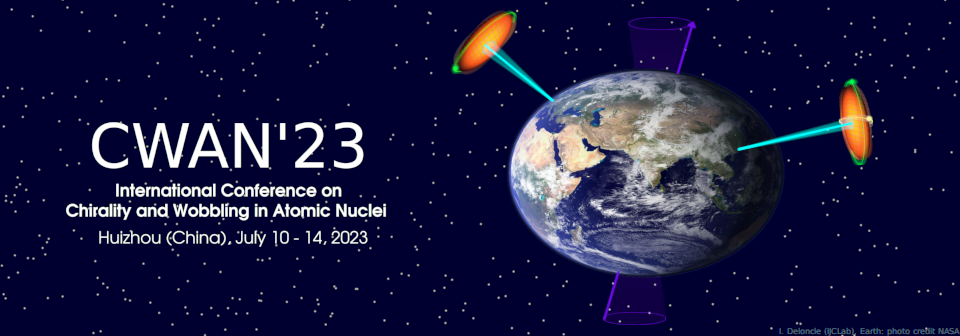Présidents de session
Session: 3
- Ernest Grodner (HIL Warsaw)
Session: 4
- Bin Qi (Shangong University)
Absolute values of EM transition probabilities in partner bands provide a stringent test of nuclear chirality. I discuss eight nuclei, $^{128}$Cs, $^{126}$Cs, $^{124}$Cs, $^{130}$Cs, $^{135}$Nd, $^{76}$Br, $^{80}$Br and $^{194}$Tl, for which such data were obtained through lifetime measurements using the Doppler Shift Attenuation Method. Analysis of the DSAM data was performed with the...
Nuclei with triaxial shape can rotate around their three axes, which produces a number of excited rotational bands for each single-particle configuration. This three-dimensional rotation can be visualised in the angular moment space, it represents a precession of the total angular momentum along an axis, and looks like the precession of a rotating top. In even-even nuclei the precession gives...
Shapes and the related spectroscopy of odd-A and odd-odd nuclei are studied using the framework of nuclear density functional theory and particle-boson coupling scheme. The Hamiltonian of the interacting boson-fermion model describing the low-lying structure of odd nuclei is constructed based on the microscopic self-consistent mean-field calculations with a choice of universal energy density...
Chirality is a well-known phenomenon in many fields, such as chemistry, biology, molecular physics, and particle physics. The study of nuclear chirality has attracted a lot of attention since it was originally suggested for triaxial nuclei in 1997. The experimental evidence of nuclear chirality is the so-called chiral doublet bands, which have been observed in many nuclei. Theoretically, there...
Chirality and wobbling are two unique fingerprints for a triaxial nuclear shape. In both of case, the triaxial deformation parameters and the configuration information are of importance. The triaxial deformation determines whether the chiral and wobbling mode exists or not, while the configuration determines what kind of the modes. Therefore, a reliable theoretical approach is needed to get...
A system composed of a triaxial core with non-axial rigid quasiparticle alignments is investigated in a semiclassical approach. The classical features of the chiral geometry and wobbling motion emerging in atomic nuclei and the associated dynamics are investigated for various core deformations and single-particle alignments. Distinct dynamical characteristics are identified in specific angular...

